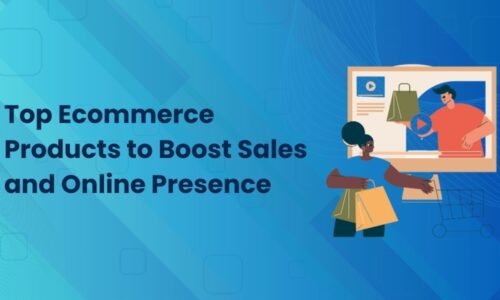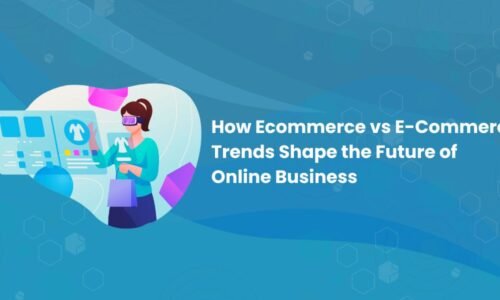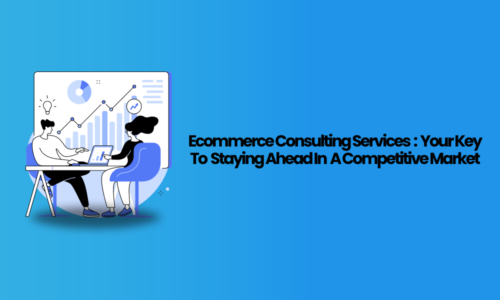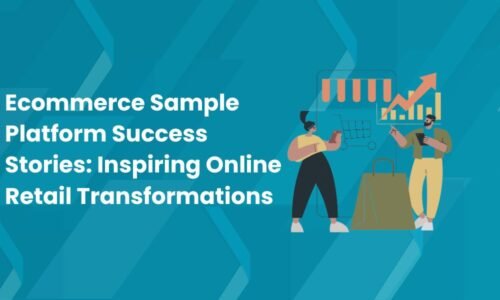In the competitive world of online shopping, one-size-fits-all approaches no longer cut it. Customers today expect personalised experiences that cater to their individual preferences and needs. E-commerce personalization involves tailoring the shopping experience for each user, making their journey more engaging and likely to result in a purchase. This guide explores the importance of personalization, the tools and strategies available, and practical steps to implement it effectively.
Why Personalization Matters
Personalization is not just a buzzword; it’s a critical strategy for online retailers aiming to enhance customer satisfaction and boost sales. Here’s why it matters:
- Improved Customer Experience: Personalised experiences make shopping more enjoyable, leading to higher satisfaction and loyalty.
- Increased Conversion Rates: When customers see products that match their preferences, they are more likely to make a purchase.
- Higher Average Order Value: Personalised recommendations often lead to customers adding more items to their cart.
- Enhanced Customer Retention: Satisfied customers are more likely to return, reducing churn rates.
- Competitive Advantage: Offering a personalised shopping experience can set you apart from competitors.
Key Personalization Strategies
There are several strategies that e-commerce businesses can employ to personalise the shopping experience:
- Product Recommendations
One of the most effective ways to personalise an online store is through product recommendations. These can be based on:
Browsing History: Suggest products similar to those the customer has viewed.
Purchase History: Recommend items that complement previous purchases.
User Segmentation: Group customers with similar behaviours and preferences and recommend products accordingly.
- Personalised Email Marketing
Email marketing remains a powerful tool, especially when personalised. This can include:
Dynamic Content: Customise email content based on the recipient’s preferences and behaviour.
Personalised Offers: Send special discounts or offers tailored to individual customers.
Behavioural Triggers: Automate emails based on specific actions, like abandoning a cart or browsing certain categories.
- Customised Web Experience
Personalising the web experience involves adjusting the site’s content and layout to match user preferences. Techniques include:
Dynamic Landing Pages: Create landing pages that change based on the visitor’s demographics or behaviour.
Personalised Search Results: Tailor search results to show products that are more likely to interest the user.
Geolocation Targeting: Customise content and offers based on the user’s geographical location.
- Social Media Personalization
Social media platforms provide a wealth of data that can be used for personalization. Strategies include:
Targeted Ads: Use social media data to serve ads that match user interests and behaviours.
Personalised Content: Share content that resonates with different audience segments.
Engagement: Interact with followers in a way that feels personal and relevant to their interests.
- Loyalty Programs
Personalised loyalty programs can significantly enhance customer retention. Consider:
Customised Rewards: Offer rewards that match the customer’s shopping habits and preferences.
Exclusive Offers: Provide special deals or early access to new products for loyal customers.
Personalised Communication: Use the data from loyalty programs to personalise emails and other communications.
Tools and Technologies for Personalization
Implementing personalization requires the right tools and technologies. Here are some essential ones:
- Customer Data Platforms (CDPs)
CDPs collect and unify customer data from various sources, providing a comprehensive view of each customer. This data is crucial for effective personalization.
- Marketing Automation Platforms
These platforms automate personalised marketing efforts, such as sending targeted emails or displaying personalised web content.
- Recommendation Engines
Recommendation engines analyse customer behaviour to suggest products they are likely to purchase. They use algorithms to deliver real-time recommendations on websites and apps.
- Personalization Platforms
These platforms offer a suite of tools for creating personalised experiences, from dynamic content and recommendations to personalised search results.
- Analytics Tools
Analytics tools help businesses understand customer behaviour and preferences, enabling them to refine their personalization strategies continuously.
Implementing Personalization: A Step-by-Step Guide
Implementing personalization in e-commerce involves several steps. Here’s a comprehensive guide:
Step 1: Collect and Analyze Data
The foundation of personalization is data. Collect data on customer behaviour, preferences, and demographics from various sources such as website analytics, CRM systems, and social media. Analyse this data to identify patterns and insights.
Step 2: Segment Your Audience
Segment your customers based on the data collected. Common segmentation criteria include:
Demographics: Age, gender, location, etc.
Behaviour: Browsing history, purchase history, etc.
Preferences: Interests, favourite product categories, etc.
Step 3: Define Personalization Goals
Set clear goals for your personalization efforts. These could include increasing conversion rates, boosting average order value, or improving customer retention.
Step 4: Choose the Right Tools
Select the tools and technologies that best fit your personalization goals and budget. Ensure that these tools can integrate seamlessly with your existing systems.
Step 5: Implement Personalisation Strategies
Start implementing the personalization strategies discussed earlier. Begin with one or two tactics and gradually expand as you see positive results.
Step 6: Test and Optimise
Continuously test and optimise your personalization efforts. Use A/B testing to determine what works best and make data-driven adjustments to improve performance.
Step 7: Monitor and Measure Success
Regularly monitor key metrics to measure the success of your personalization strategies. Key metrics include conversion rates, average order value, customer retention rates, and customer satisfaction scores.
Future Trends in E-commerce Personalization
As technology continues to evolve, so do the possibilities for e-commerce personalization. Here are some emerging trends that are likely to shape the future of personalised online shopping experiences:
- Artificial Intelligence and Machine Learning
AI and machine learning are becoming increasingly sophisticated, enabling even more accurate and real-time personalization. These technologies can analyse vast amounts of data quickly to predict customer preferences and behaviour, allowing for highly targeted and effective personalization.
- Augmented Reality (AR) and Virtual Reality (VR)
AR and VR are transforming the way customers shop online. These technologies can offer personalised virtual try-ons and immersive shopping experiences, helping customers make better purchasing decisions and enhancing their overall experience.
- Voice Commerce
With the rise of voice assistants like Amazon’s Alexa, Google Assistant, and Apple’s Siri, voice commerce is gaining traction. Personalising the voice shopping experience involves understanding and anticipating customer needs based on voice interactions and previous behaviour.
- Hyper-Personalization
Hyper-personalization takes traditional personalization to the next level by using real-time data and advanced analytics to provide highly tailored experiences. This can include personalised content, offers, and interactions across all touchpoints in the customer journey.
- Predictive Analytics
Predictive analytics uses historical data, machine learning, and statistical algorithms to predict future customer behaviour. This can help e-commerce businesses anticipate customer needs and offer personalised recommendations and promotions proactively.
- Privacy-Centric Personalisation
As data privacy becomes a growing concern, businesses are focusing on privacy-centric personalization strategies. This involves using privacy-friendly data collection methods and giving customers more control over their data and personalization preferences.
Case Studies of Successful Personalization
To illustrate the power of personalization, let’s look at a few case studies of companies that have successfully implemented personalization strategies:
- Amazon
Amazon is a pioneer in e-commerce personalization. The company uses sophisticated algorithms to provide personalised product recommendations based on browsing and purchase history. This strategy has been a significant driver of Amazon’s success, contributing to higher conversion rates and customer loyalty.
- Netflix
Although not a traditional e-commerce platform, Netflix’s approach to personalization is worth noting. Netflix uses viewing history and preferences to suggest content that users are likely to enjoy. This personalised approach has been crucial in keeping subscribers engaged and reducing churn.
- Sephora
Sephora uses personalization extensively to enhance the customer shopping experience. Through its app and website, Sephora offers personalised product recommendations, customised beauty advice, and virtual try-ons using AR technology. These personalised experiences help Sephora build strong customer relationships and drive sales.
- Spotify
Spotify personalised the music listening experience by analysing user behaviour to create custom playlists and recommendations. Features like Discover Weekly and Daily Mixes are tailored to individual tastes, keeping users engaged and satisfied.
Practical Tips for Getting Started with Personalisation
If you’re ready to implement personalization in your e-commerce business, here are some practical tips to get started:
- Start Small
Begin with simple personalization tactics, such as personalised email campaigns or product recommendations. As you become more comfortable and see positive results, gradually expand your efforts.
- Use Customer Feedback
Regularly gather and analyse customer feedback to understand their preferences and pain points. Use this information to refine your personalization strategies.
- Invest in the Right Technology
Choose personalization tools that fit your business needs and budget. Ensure they integrate well with your existing systems and offer the features you need to deliver personalised experiences.
- Test and Iterate
Personalization is an ongoing process. Continuously test different strategies and use data to make informed adjustments. A/B testing can help you determine what works best for your audience.
- Focus on Data Quality
Ensure that the data you collect is accurate and up-to-date. High-quality data is the foundation of effective personalization.
- Prioritise Privacy
Respect your customers’ privacy by being transparent about data usage and giving them control over their data. Implement robust security measures to protect customer information.
Conclusion
E-commerce personalization is more than just a trend; it’s a necessity in today’s competitive online marketplace. When creating an online retail store UK, by understanding your customers and tailoring their shopping experiences, you can significantly enhance customer satisfaction, increase conversion rates, and build lasting loyalty.
The future of e-commerce personalization is bright, with emerging technologies like AI, AR, VR, and predictive analytics offering even more opportunities to create unique and engaging experiences. By staying ahead of these trends and continuously refining your strategies, you can ensure that your business remains competitive and successful.
Implementing personalization requires careful planning, the right tools, and a commitment to continuous improvement. Start small, focus on data quality, and always prioritise your customers’ privacy. With these steps, you can harness the power of personalization to transform your e-commerce business and achieve lasting success.




